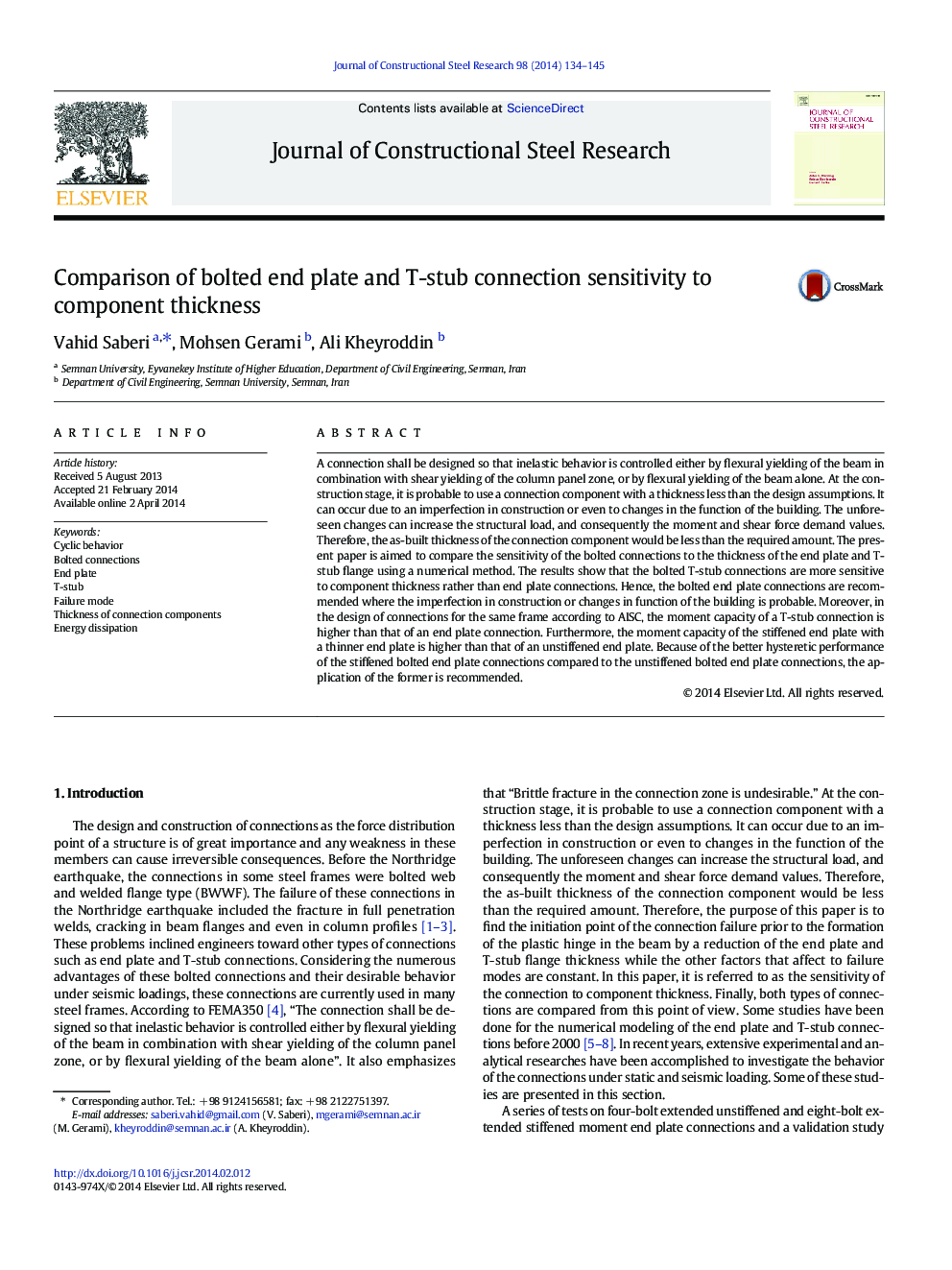| Article ID | Journal | Published Year | Pages | File Type |
|---|---|---|---|---|
| 284711 | Journal of Constructional Steel Research | 2014 | 12 Pages |
•Bolted T-stub connections are more sensitive than end plate to component thickness•Moment capacity of T-stub, stiffened & unstiffened end plate connections is compared•Energy dissipation of T-stub and end plate connections is compared•End plate connection is recommended where imperfection in construction is probable
A connection shall be designed so that inelastic behavior is controlled either by flexural yielding of the beam in combination with shear yielding of the column panel zone, or by flexural yielding of the beam alone. At the construction stage, it is probable to use a connection component with a thickness less than the design assumptions. It can occur due to an imperfection in construction or even to changes in the function of the building. The unforeseen changes can increase the structural load, and consequently the moment and shear force demand values. Therefore, the as-built thickness of the connection component would be less than the required amount. The present paper is aimed to compare the sensitivity of the bolted connections to the thickness of the end plate and T-stub flange using a numerical method. The results show that the bolted T-stub connections are more sensitive to component thickness rather than end plate connections. Hence, the bolted end plate connections are recommended where the imperfection in construction or changes in function of the building is probable. Moreover, in the design of connections for the same frame according to AISC, the moment capacity of a T-stub connection is higher than that of an end plate connection. Furthermore, the moment capacity of the stiffened end plate with a thinner end plate is higher than that of an unstiffened end plate. Because of the better hysteretic performance of the stiffened bolted end plate connections compared to the unstiffened bolted end plate connections, the application of the former is recommended.
